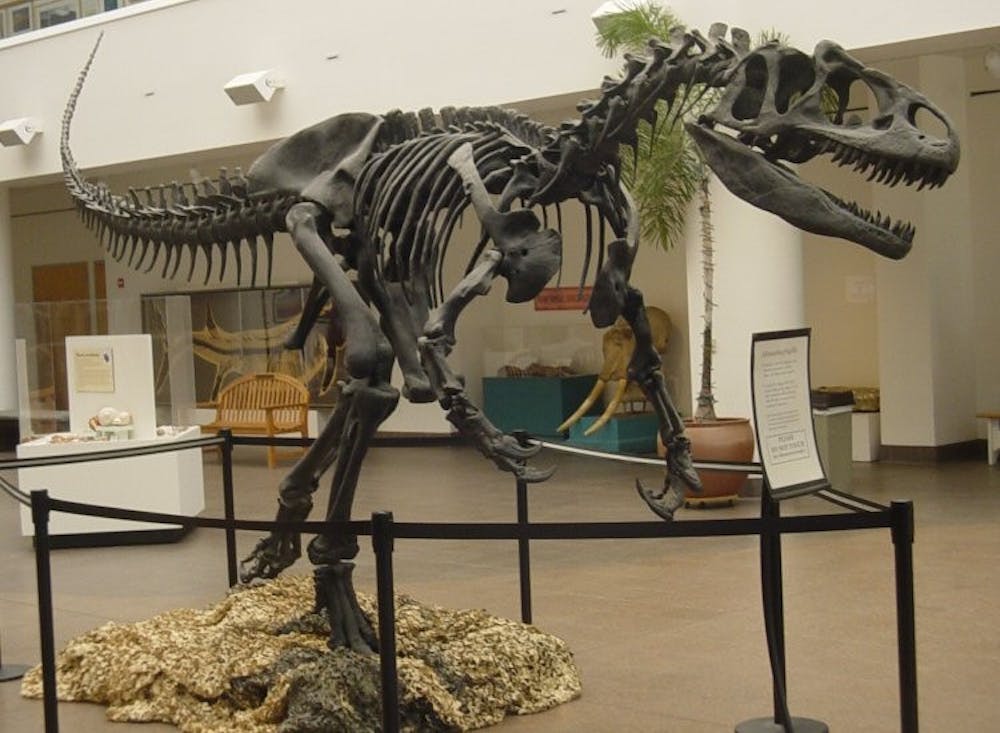Paleobiologists at Virginia Polytechnic Institute and State University (Virginia Tech) recently found a new fossil that displayed the anatomy of a dinosaur predecessor known to be one of the earliest ancestors of the modern-day bird.
Paleobiologists, researchers who study how fossil findings may relate to biological knowledge of how species evolve, have been aware of the chain of ancestry between dinosaurs and other reptiles for some time.
However, the researchers were previously unable to visualize what early predecessors looked like because of the lack of transitional fossils. Transitional fossils are fossils of ancient species that show the link between both ancestors and descendants of a particular species.
A new study describes the features of Teleocrater rhadinus, a species that lived over 245 million years ago in a time period called the Middle Triassic epoch, predating dinosaurs.
The study was published in Nature and was conducted by a group of paleobiologists led by Sterling Nesbitt, assistant professor of geosciences in Virginia Tech’s College of Science.
“The discovery of such an important new species is a once-in-a-lifetime experience,” Nesbitt said in a press release.
Approximately seven to 10 feet long, Teleocrater, the earliest known bird ancestor, had a long neck and tail. Its fossils appear in the period directly following when a group of reptiles, archosaurs, split between a crocodylian-like branch and a bird-like branch.
The research team based their evolutionary theory on Teleocrater’s intact ankle bones and other parts of the skeleton, which indicate that the species is one of the oldest members of the bird branch on the archosaur tree, while having the crocodylian feature of walking on four legs.
“The discovery of Teleocrater fundamentally changes our ideas about the earliest history of dinosaur relatives,” Nesbitt said in the release. “It also raises far more questions than it answers.”
The first Teleocrater remains were first uncovered in southern Tanzania in 1933 and were studied by Alan Charig, former Curator of Fossil Reptiles, Amphibians and Birds at the Natural History Museum of London in the 1950s.
However, because crucial bones, namely, ankle bones, were missing from the skeleton and fossils, the researchers could not determine whether Teleocrater was more similar to crocodiles or dinosaurs.
This research was halted due to the death of Charig, who originally led the research. It was not until recently that paleontological teams started investigating the missing remains of Teleocrater to solve the question of its origins.
The discovery of the ankle bones proves that several features typically thought to have formed in dinosaurs evolved earlier. They evolved with Teleocrater instead, which existed and became extinct before dinosaurs existed.
Nesbitt and his team discovered that there were more species of early dinosaur ancestor and that they were more geographically diverse than previously thought, spreading over modern-day Brazil, India and Russia.
Michelle Stocker, co-author and assistant professor of geosciences in the College of Science, explained in a press release the importance of fossil discoveries.
“It’s so exciting to solve puzzles like Teleocrater, where we can finally tease apart some of these tricky mixed assemblages of fossils and shed some light on broader anatomical and biogeographic trends in an iconic group of animals,” she said in the release.
“This research sheds light on the distribution and diversity of the ancestors of crocodiles, birds and dinosaurs,” Judy Skog, program director in the National Science Foundation’s Division of Earth Sciences, said in a press release. “[It] indicates that dinosaur origins should be re-examined now that we know more about the complex history and traits of these early ancestors.”
The team plans on returning to Tanzania this summer to continue uncovering the remainder of Teleocrater’s skeleton and hopefully making additional discoveries about the origin of dinosaurs, crocodiles and birds.





